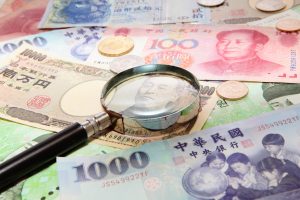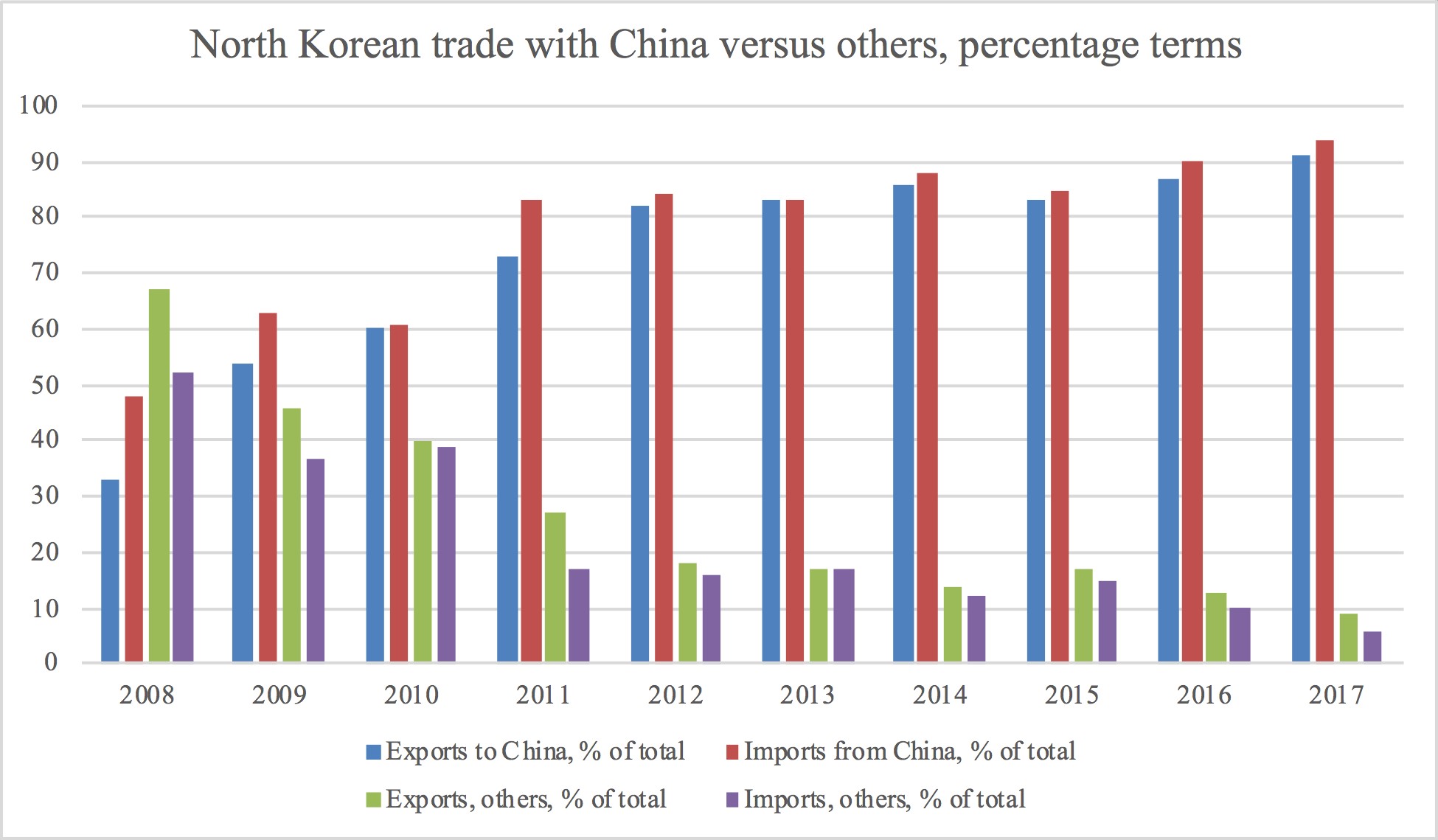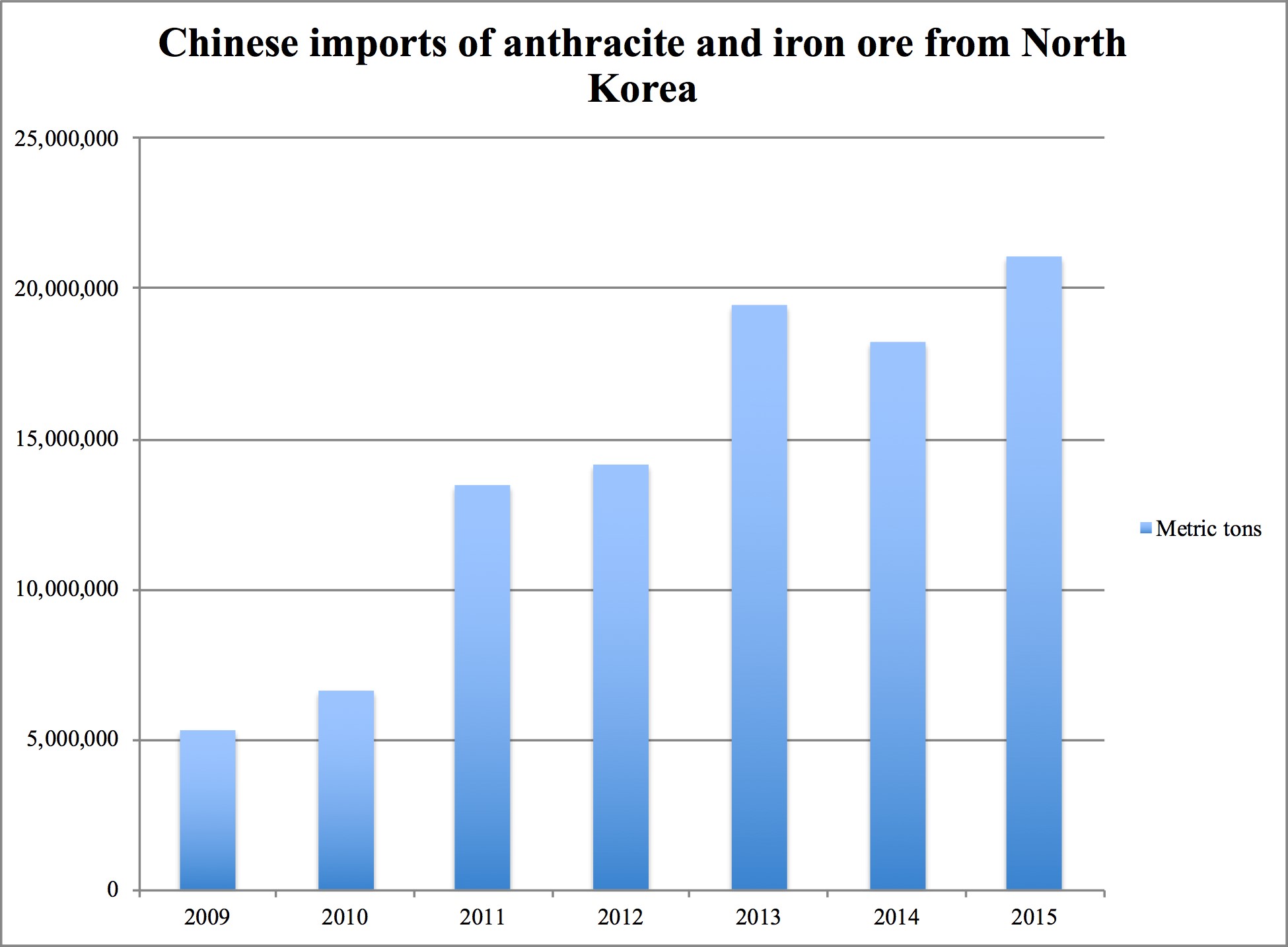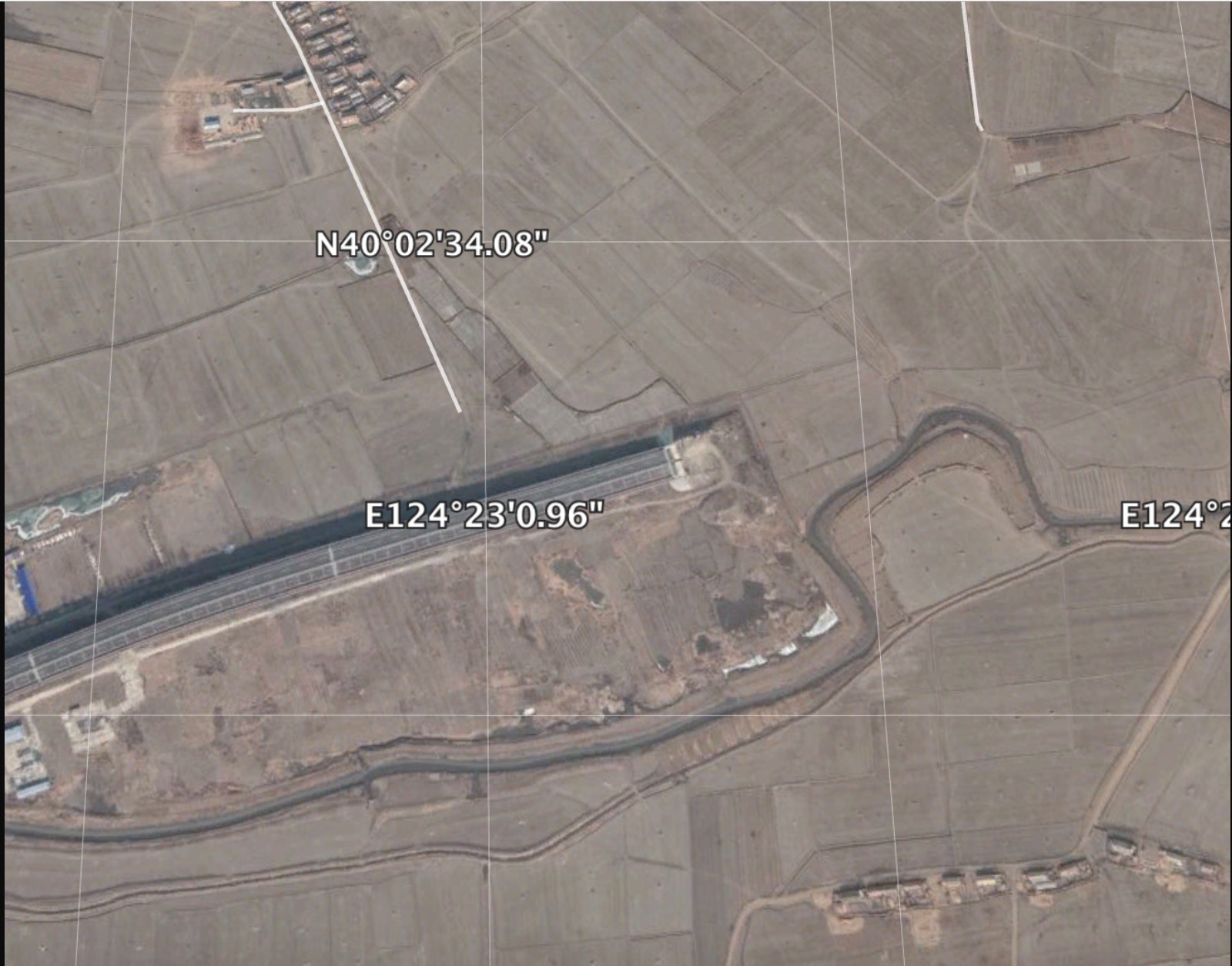The North Korean Economy, August 2019: Why China Will Continue to Dominate

Throughout the diplomatic process between South and North Korea and the Trump administration’s nuclear diplomacy with Pyongyang, there has been an expectation that should sanctions be relaxed or removed, North Korea would begin to attract investments from all over the globe. US President Donald Trump has consciously fueled these expectations, depicting trade with the US as one of the main carrots for North Korea to give up its nuclear weapons. South Korean President Moon Jae-in regards massively increased trade with North Korea as a central driver of South Korea’s future economic growth, claiming in early August that economic cooperation between the two Koreas could let them overtake Japan in regional economic dominance. Theoretically, North Korea could attract a diverse range of investors if its relations with the United States and South Korea were normalized and sanctions were removed. Realistically, however, it is far more likely that China’s economic domination over North Korea would continue, and even increase, in such a scenario.
Why China Rulesjan
Among foreign trade partners, China dominates North Korea economically in almost every dimension. It is North Korea’s only trade partner of note, and by a very wide margin. In fact, North Korea’s trade dependence on China has rapidly increased over the past few years. The following graph shows North Korean trade with China and with the rest of the world respectively, as a proportion of overall trade flows:

The central reason for China’s growing economic dominance as North Korea’s trade partner is the rapid increase of Chinese imports of North Korean minerals over the past few years. Between 2009 and 2015, such imports increased by close to 300 percent.

The current scale of Chinese economic dominance is neither irreversible nor static, and is not necessarily a predictor of its future trajectory. Should the North Korean government decide for strategic reasons that it was better off decreasing its trade with China while trading more with the West or South Korea, that would certainly be possible. There are almost certainly elements within the North Korean government that want to limit the country’s economic dependence on China. Jang Song Thaek’s purge partially occurred because of his close dealings with China, and he was accused of selling out the country’s resources too cheaply.
North Korean publications have often highlighted sales of unprocessed natural resources as a problem, both because they could be sold at a higher value if first processed at home, and because economic dependence often leads to political control. Kim Jong Il admitted this in a speech given before the Korean Workers’ Party Central Committee in 1995. Many North Koreans still see potential US investments as a way to bring cutting-edge, globally leading technology to the country, and would much rather see American and South Korean businesses making inroads than Chinese companies expanding their presence.
Economic independence and diversification among trade partners may be a laudable goal in theory, but in practice, it’s often difficult to achieve, and this would certainly be the case if North Korea attempts to wean itself off its economic dependence on China. In parallel with the drastic increase in mineral exports, North Korea has seen a building boom of sorts. Street renovations in Pyongyang and elsewhere and various grandiose infrastructure projects have been hallmarks of, if not vital to, Kim Jong Un’s rule; and his repeated promise of prosperity and higher living standards will not simply be forgotten. Much of this has likely been funded by revenue from increased mineral exports to China, and without this income, it’s far from certain that North Korea could continue this building boom.
Perhaps most importantly, China’s dominance means that no other country can come even close to competing with Chinese connections on the ground. Sanctions have made much of direct trade impossible, but people who have traveled to the Sino-Korean border region and met with Chinese traders confirm that connections remain strong. Many Chinese businesspeople play a long game and find various ways to maintain contacts and exchanges with their North Korean partners while waiting for China’s sanctions enforcement to ease up. North Korean business delegations have been coming and going with unabated frequency, despite Chinese sanctions. One person who spoke to the author recounted a meeting with a Chinese-Korean business person who started manufacturing foodstuffs to donate to localities in impoverished parts of the border region and preserved these connections while their regular business operations were put on hold due to the sanctions.
A Tough Dependence to Kick
North Koreans involved in foreign trade and economic exchange know they have no better foreign alternative for banking, trade and business than the Chinese system. And both countries aspire to expand these exchanges. China’s sanctions implementation appears robust at the moment, but in the long run, it plans for economic ties with North Korea to grow. In late July, Asahi Shimbun reported that Xi Jinping promised Kim Jong Un to fund roads and customs infrastructure on the North Korean side of the “new” bridge over the Amnok (Yalu) River dividing the two countries. As of March this year, the bridge remained unconnected to road networks on the North Korean side.

Xi also reportedly promised to fund construction in North Korea’s Hwanggumpyong Special Economic Zone (SEZ) on the border of the two countries. In April this year, a new bridge was finally completed between Manpo in North Korea and Jian in China, three years after it was opened. In a planned economy such as China, infrastructure investments aren’t always expressions of clear intent and strategy—for example, the state can make such investments to boost growth numbers and decrease unemployment statistics. Nonetheless, at the very least, China’s expansion of infrastructure connecting it to North Korea shows long-term intent to increase bilateral economic exchanges. The Chinese provinces bordering North Korea are some of the poorest in the country, and trade with North Korea is a crucial driver for economic activity.
Chinese state media has, for example, highlighted Kim Jong Un’s revival of the North Korean border town of Sinuiju, and the new economic opportunities there. In January this year, China’s Global Times wrote in connection with Kim Jong Un’s visit that several economic initiatives in the country’s Liaoning Province, such as a free trade port, are geared at boosting trade with North Korea, among other partners. There are also signs that China plans to include North Korea in the Belt and Road Initiative (BRI). A North Korean delegation was invited to a BRI forum this spring and a report published by the Liaoning Academy of Social Sciences—one of the provinces primarily tasked with economic exchange with North Korea—has detailed how BRI could extend to North Korea. Judging both by past precedent and future visions, there should be little doubt that China envisions more infrastructure sponsorship in North Korea to spur growth in trade.[1]
Despite political and ideological qualms about Chinese dominance, North Korea, too, envisions more robust economic ties. Like China, North Korea expects that trade will grow between the two countries. The sanctions are stifling, to be sure, but in the eyes of both North Korea and China, they are temporary. Kim Jong Un’s grand plans for Sinuiju, for example, are premised on growing economic exchanges with China. Some of the most critical SEZs launched under Kim are in the north of the country and geared toward Chinese investors. In February this year, NK Pro reported that a Chinese firm is making preparations to begin construction of a 1.5 million square meter SEZ in Sinuiju, amounting to a $100 million investment.
Some might argue that even if North Korea and China follow through with all these visionary plans and expand their trade, there would still be opportunities for South Korean and perhaps US investments in a sanctions-free future to counterbalance China’s dominance. This is certainly possible, but may be unlikely to happen in practice. It is often said that economics is not a zero-sum game, and that everyone gains from trade. That may be true in theory, but in practice, it’s much more complicated. When a country opens up for foreign investments, it matters who gets there first to purchase or lease the land plots in the most lucrative locations, who is able to get the most lucrative contracts for infrastructure investments, mines and the like and who can first establish the most crucial connections with local officials.
North Korea certainly has the tools to steer development toward other countries, but Chinese business interests have an incomparable and massive advantage. As Anna Fifield showed in a recent report, Chinese investors are betting heavily that the US will agree to ease sanctions within a not-too-distant future. And when sanctions ease, investors will be ready to go. The Dandong Zhongkai International Complex, for example, is a planned hub for logistics, housing and malls on the border with North Korea to facilitate the expanded trade that Chinese investors envision with the country. According to Fifield, 90 percent of investment opportunities in the first phase of the project have already been sold.
Conclusion
China’s comparative economic advantages over other competitors and the extent of North Korea’s dependence on Chinese trade and investment have several important policy implications. The idea that US investments would flow into North Korea on a large scale if sanctions were lifted is highly exaggerated. Business ties are not that quickly or easily constructed, and Chinese interests have a huge advantage. Economically, North Korea will most likely remain solidly within China’s economic sphere of interest even in a future where sanctions are eased and North Korea normalizes its relationship with the West. The vast preparations on the Chinese side for future investments in North Korea also suggest that while China is applying economic pressure on North Korea and broadly complying with US sanctions, it doesn’t intend to do so forever. The Chinese government is likely not prepared to see its infrastructure investments go unused forever, and eventually, it may well prioritize the economic interests of the border regions over compliance with international sanctions. This, of course, assumes that the US doesn’t take actions that would make increased trade with North Korea prohibitively costly for China, such as cutting the latter out of the US financial system or levying substantive secondary sanctions.
For South Korea, China’s dominance in the North Korean economy casts serious doubts on how realistic economic integration really is between the two Koreas in the future. In principle, North Korea wants South Korean investments. But these investments will inevitably be much more complicated than those from China, not least for reasons of domestic social control in North Korea. For the foreseeable future, South Korean investments in North Korea will remain largely political projects, stemming from government-to-government agreements within clear limits. Meanwhile, should the international situation improve for North Korea, expanded Chinese investments will be much less complicated, and the ties are already there to exploit.
This column benefitted greatly from conversations with Go Myung-Hyun of the Asan Institute, as well as two people who asked to remain anonymous. All opinions and conclusions belong solely to the author.
- [1]
I am grateful to Go Myung-hyun of the Asan Institute for pointing this out.
